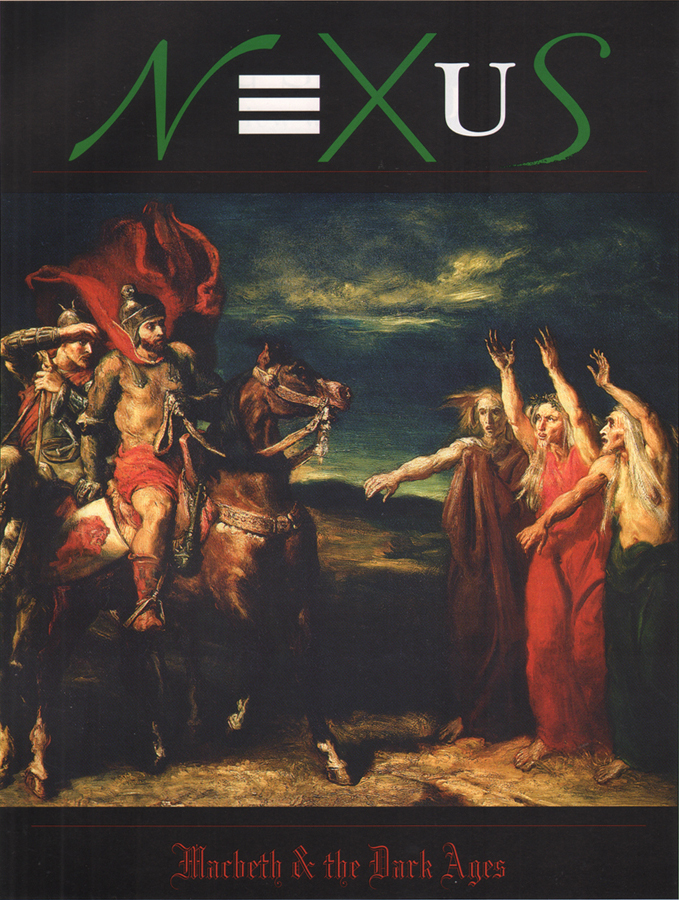NEXUS: Macbeth and the Dark Ages
SERVING AMERICAN SECONDARY SCHOOLS FOR 28 YEARS
THE COLLEGE BOARD’S Macbeth REVIEW
“The wonderfully rich historical background — colorful anecdotes and clear, conversational accounts of family ties, political motives, events, and phenomena — will definitely enhance students’ study of the play. The illustrations for the 14 short sections of this volume are stunning: maps, production photos, beautiful reproductions of tapestries, and manuscript illuminations.”
CLASSROOM NOTES PLUS, NCTE (National Council of Teachers of English)
“Each [NEXUS] volume…is a hybrid of a well-written interdisciplinary textbook and a lively, attractive magazine.”
BALDWIN-WOODVILLE HIGH SCHOOL, Baldwin, WI
“I have used the Macbeth volume thus far, and it helps the kids to realize that Shakespeare is contemporary and that we can relate literature to the real world. I am quite happy with the results I’ve received from my kids. Kids who are harder to engage enjoy the visuals and the real-world applications. Overall each volume provides research that any teacher would love to do, but doesn’t have the time to do, and the fact that NEXUS does it for us is very valuable.” – Marti Koller, English teacher
TEMPO, Texas Association for the Gifted & Talented
“With an impressive group of contributors and consultants, Publisher/Editor Jesse Bryant Wilder has put together a stunning set of challenging materials that will provide outstanding learning experiences for secondary students.”
GENE MAEROFF, Founder of the Hechinger Institute on Education and Media, Teachers College, Columbia University
“NEXUS is a remarkable publication, one of the best of its kind for promoting interdisciplinary work by students. Each volume reflects careful research and is filled with information that both engages students and advances their understanding of how the disciplines complement each other.” – Gene Maeroff is the former Senior Fellow at the Carnegie Foundation for the Advancement of Teaching and former New York Times national education correspondent.
NCAIS North Carolina Association of Independent Schools Newsletter
“NEXUS is a visually exciting, reader friendly magazine with chapters contributed by nationally known experts in their fields. Crisp scholarship, challenging activities, and teacher supplements make learning entertaining and challenging. NEXUS brings the past to life by using a lively writing style and colorful or intriguing anecdotes, and by highlighting the ‘story’ in history.”
(SEE TEXT SAMPLES BELOW IN GREEN.)
EVERY PAGE ENGAGES and STIMULATES CRITICAL and CREATIVE THINKING.
NEXUS Cross-Curricular Connections in each Lesson Deepen Students’ Understanding of the Play and Period.
- Common Core-Aligned lessons embedded in the text
- Tricks for Explicating Shakespeare’s Figurative Language
- Interdisciplinary Connections that help Illuminate Shakespeare’s Darkest Drama
Aligned with Common Core Standards. For secondary students.
Macbeth Lessons and Lesson Plans, Part I – Themes and Figurative Language

Innovative Ways of Staging Macbeth – 2 Pages
The Macbeth theme of conscience vs. ambition is explored in a Stratford, Ontario production in which Macbeth’s personality is split between several versions of the character. Stratford, Ontario Festival director Richard Rose, the former head of the Festival’s Young Company, also teaches students to read the subtext of Macbeth from multiple viewpoints and to stage the play with a modern spin. This 2-page chapter is aligned with Common Core Standards CCSS.ELA-LITERACY.RL.1, RL.2, RL.3, and RL.5 (for 9-10 and 11-12).
TEXT SAMPLE:
“I go through a relationship-building phase with the play,” Rose explains. In that process, the director develops a concept of what the piece is about, and in what period of history or particular place it should be set….Macbeth and Lady Macbeth have no children, he points out. Why? Are they still hoping for children? Is their political ambition simply a desperate way of answering their need for an immortality most people achieve by having children? Do they define themselves by their future? And do the the Macbeths have adults and children killed because they are competition for the future? The director’s mental exploration might lead to a connection between the importance of children to Shakespeare’s characters and, say, the urgency with which so many of today’s couples are trying new fertility methods in order to have children. Such ideas translate for Rose into a series of images or symbols, connected to specific lines and the play’s overall emotional patterns, which he then begins to think about incorporating in the production.”
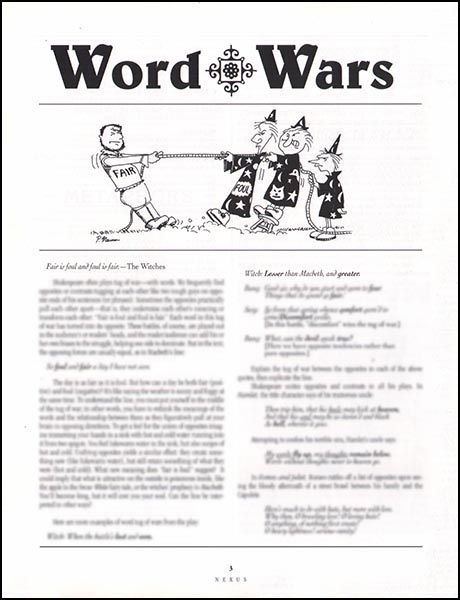
Macbeth Figurative Language Lesson – 2 Pages
In this 3-page lesson, students explore the language Tug-of-Wars in the Scottish play – fair is foul and foul is fair – that reflect the struggles between good and evil, conscience and ambition, natural and unnatural in Macbeth.This interactive chapter is aligned with Common Core Language Arts Standards CCSS.ELA-LITERACY.RL.1, RL.4 and RL.5 (for 9-10 and 11-12) and includes activities.
TEXT SAMPLE:
“Shakespeare often plays tug of war – with words. We frequently find opposites or contrasts tugging at each other like two tough guys on opposite ends of his sentences or phrases. Sometimes the opposites practically pull each other apart – that is, they undermine each other’s meaning or transform each other: ‘Fair is foul and foul is fair.’ Each word in this tug-of-war has turned into its opposite. These battles, of course, are played out in the audience’s or readers’ heads, and the reader/audience can add his or her own biases to the struggle, helping one side to dominate. But in the text, the opposing forces are usually equal, as in Macbeth’s line: ‘So foul and fair a day I have not seen.’ The day is as fair as it is foul. But how can a day be both fair (positive) and foul (negative)? It’s like saying the weather is sunny and foggy at the same time. To understand the line, you have to put yourself in the middle of the tug of war…”
FOR MORE engaging Shakespeare Figurative Language lessons see “Word Games” in Romeo and Juliet and the Renaissance and “Shakespeare and Caesar, Mysteries of the Mind,” in Julius Caesar and Ancient Rome, from Republic to Empire.
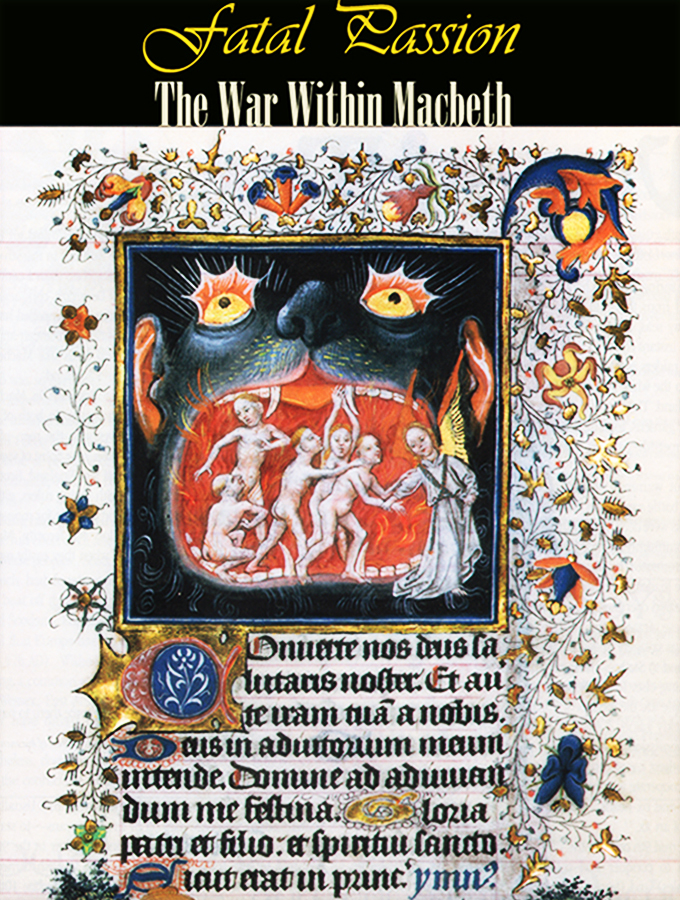
Lesson on Macbeth Themes: Fatal Passion and The War Within – 4 Pages
TEXT SAMPLE:
“Is it possible to kill your conscience? There is a war in all of us. Interior battles are waged every day between our instincts (impulses and appetites) and our conscience, between our passions and our principles. Did your instincts ever tell you to do something, but your conscience held you back? The same war takes place in Macbeth. At the beginning of the play, his conscience is as strong as his lust for power: ‘If chance will have me King, why/chance may crown me,/without my stir.’ But after reluctantly killing the king, Macbeth gradually tries to kill, or at least numb, the part of himself that distinguishes right from wrong – so his dark side can rule…”
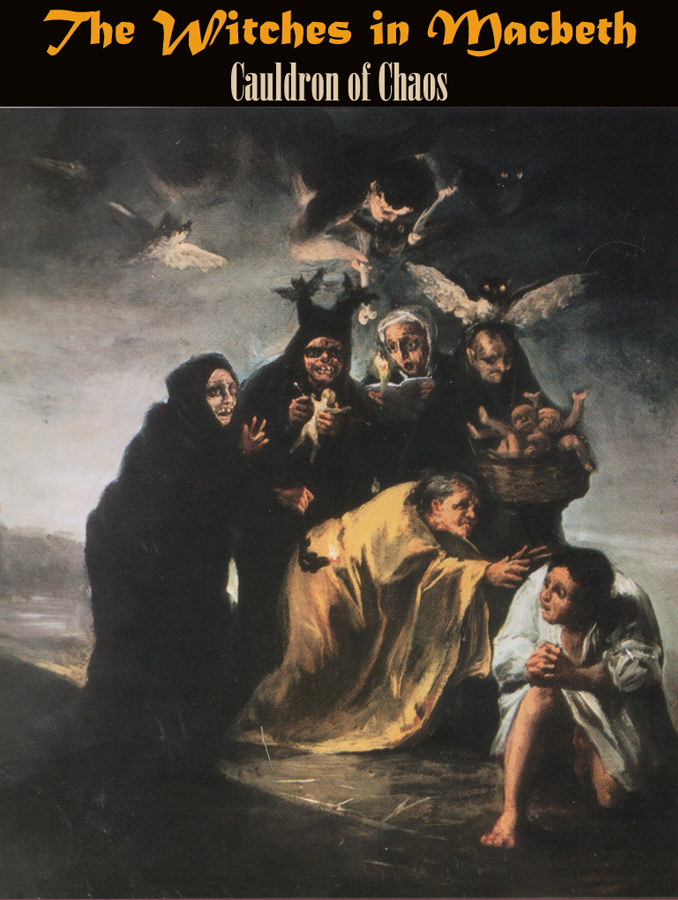
Witches Lesson – 2 Pages
In this lesson students explore how the witches and their familiars reflect the natural order versus unnatural chaos theme in Macbeth. This lesson aligns with Common Core Standards CCSS.ELA-LITERACY.RL1, RL.2, RL.4, RL.5, and RL.6 as well as Common Core History Standards CCSS.ELA-LITERACY.RH.9-10.1, RH.2 and RH.3 (for 9-10 and 11-12)
TEXT SAMPLE:
“People are probably just as obsessed with knowing the future today as Macbeth was, whether they consult fortune tellers or tarot cards, turn to the horoscope page in a local newspaper, or plan their day around a fortune cookie. Even the wife of a recent U.S. president regularly consulted an astrologer. In Shakespeare’s time many relied on seers, astrologers, and wizards to tell them whether their crops, health, marriages and even kingdoms would succeed or fail. Queen Elizabeth I had her own astrologer. But some people turned to the dark side to see the future, using necromancy, a form of black magic, to conjure and communicate with the dead. The dead supposedly had the ability to ‘look into the seeds of time and say which grain will grow and which will not.’ In the conjuring scenes in Macbeth, the witches practice necromancy, which is why they use…”
Macbeth Lessons and Lesson Plans Part II –
Pre-Reading Activities, the Backstories Behind Shakespeare’s Darkest Drama
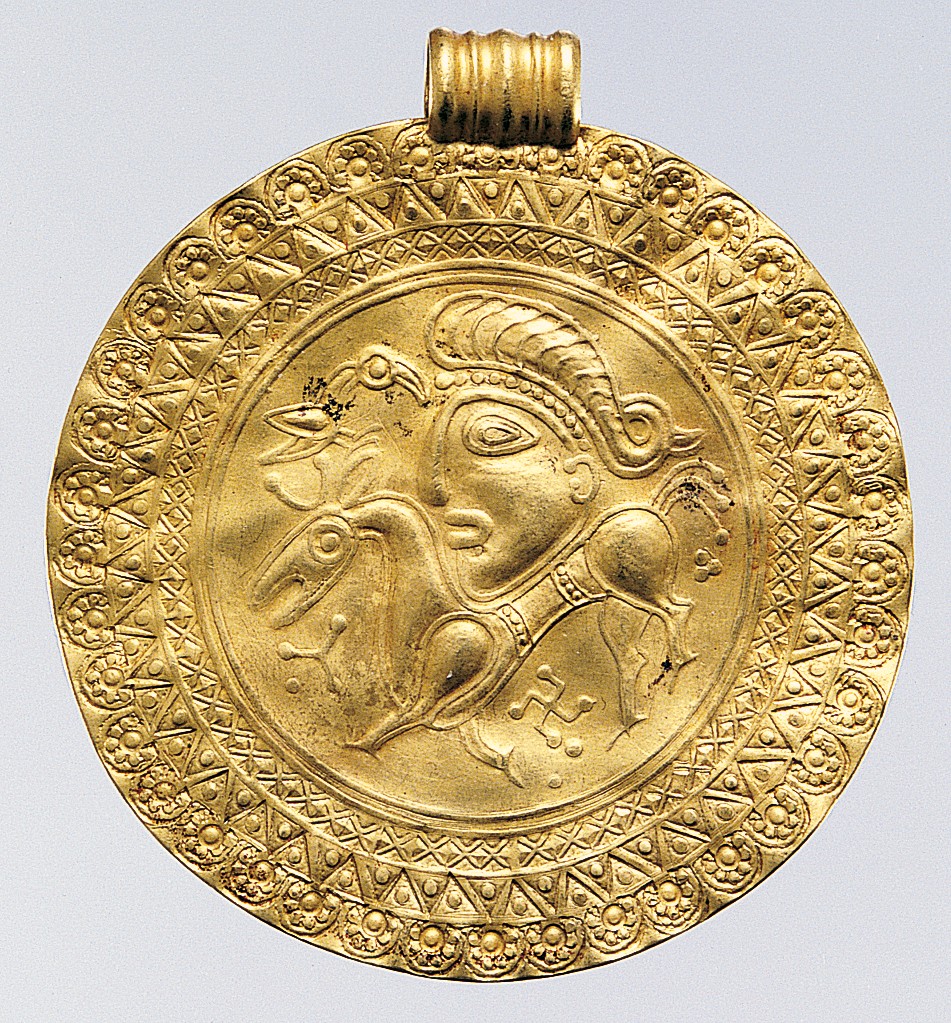
Macbeth Pre-Reading Lesson for Act 1:
Siward and the Vikings (Norsemen) in Macbeth – 2 Pages
The Viking (Norwegian) invasion that begins the play is supported by Scottish rebels. Such alliances were typical in the 10th and 11th centuries. In this chapter students investigate the the Viking assaults on Scotland and the Scottish factionalism that it provoked. This chapter prepares students to understand not only the opening scene of the Scottish play, but also the closing scenes (Siward was a Viking).
TEXT SAMPLE:
“In the late spring of 793, a band of Vikings’ boarded their dragon ships and set sail from the land of the midnight sun. Cutting a highway through gray seas, they headed south toward warmer weather, longer nights, and instant riches in the British Isles. It was early June when the first Viking raider assaulted Western Europe. Their slender ships glided quietly onto the white beaches of Lindisfarne, known in later times as the Holy Island. The peaceful monks who inhabited it were busy cultivating their gardens, tending sheep, and illuminating manuscripts with intricate carpet-like patterns. The famous Lindisfarne Gospels were produced here. Without warning, swarms of huge bearded men waving long swords and battle axes swept down on them….Viking raids were still common in Scotland in Macbeth’s time. Macbeth starts and ends with Viking invasions. In both of these wars, powerful Scottish leaders ally themselves with the men of the north…The “English” force that invades Scotland at the end of the play is led by Siward, the earl of Northumbria….Although Siward was one of the English king’s earls, he had Viking blood in him. Shakespeare makes him so ferocious that when he receives news of his son’s death, his main concern is whether the young man’s wounds are in front or behind. Siward: Had he his hurts before?/Ross: Ay, on the the front./Siward Why, then, God’s soldier he be!… Siward was so hard and cold-hearted that people at the time said he was the offspring of a woman and polar bear!”
This lesson meets Common Core Standards CCSS.ELA-LITERACY.RL.1 and RL.4 as well as Common Core History Standards CCSS.ELA-LITERACY.RH.2, RH.6, RH.8 and RH.9 (for 9-10 and 11-12).
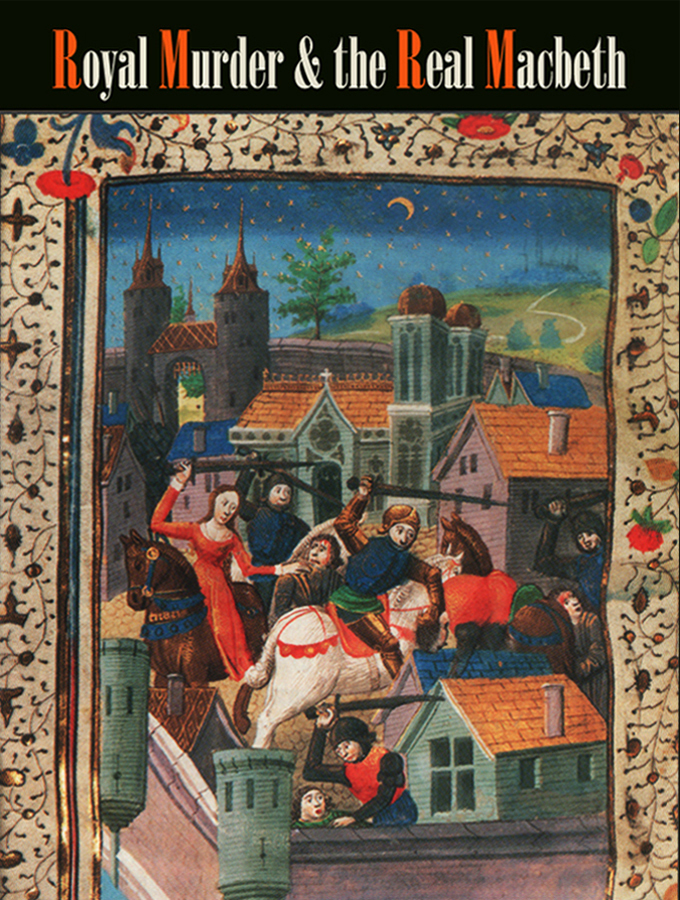
Macbeth Pre-Reading Lesson for Act 2:
Royal Murder and the Real Macbeth – 2 Pages
This lesson introduces students to the real Macbeth and Lady Macbeth and investigates the bloody competition for the throne that dominated Scottish politics throughout the 10th and 11th centuries. The lesson also explores the reign of Macbeth’s successor, Malcolm III, who was exiled at the court of Edward the Confessor during Macbeth’s reign. In addition students learn how the death of Macbeth helped make the consolidation and Anglicization of Scotland possible under Malcolm (Shakespeare implies the latter in the final scene).
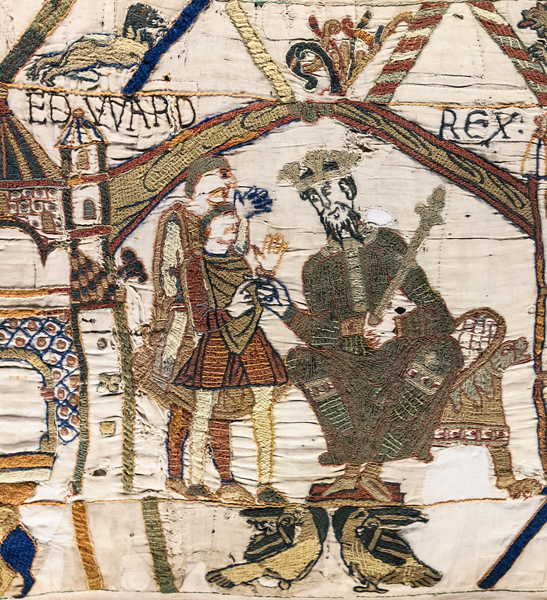
Macbeth Pre-Reading Lesson for Act 4:
Edward the Confessor, the “Holy King” – 2 Pages
Students investigate Edward the Confessor’s role as an exemplary king in Macbeth. They also explore how events during Edward’s reign led to the Battle of Hastings.
TEXT SAMPLE:
“People claimed Edward the Confessor was so holy, he could cure the sick with a touch of his hands (‘the royal touch’). This healing power was supposedly even transferred to things Edward came in contact with, like his bath water. Servants used to steal and sell the royal tub water to believers who sprinkled it on the eyes of the blind. Many claimed to regain their sight. Some people even drank it to cure their ails. In Act IV, Scene 3 of Macbeth (which is set in England), we are told that King Edward the Confessor is about to perform some healings: Malcolm: …Comes the King forth, I pray you?/Doctor: Ay, sir. There are a crew of wretched souls/That stay his cure…
Shis lesson meets Common Core ELA Standards CCSS.ELA-LITERACY.RL.1 and RL.4 as well as Common Core History Standards CCSS.ELA-LITERACY.RH.2, RH.6, RH.8 and RH.9 (for 9-10 and 11-12).
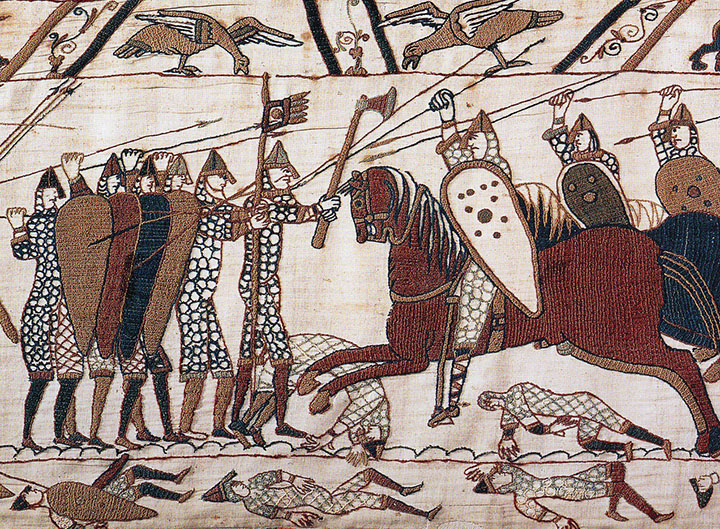
Macbeth Art and History Lesson:
Unraveling the Bayeux Tapestry, Part I – 5 Pages
In this lesson students explore the Battle of Hastings – which reshaped Scotland during Malcolm and his son’s reigns nearly as much as it did England – through the Bayeux Tapestry’s scene-by-scene the lead-up to the battle and the battle itself. In addition, the Bayeux Tapestry provides contemporary views of feudal customs, military dress, battle tactics, medieval dining and so forth.
TEXT SAMPLE:
“The Bayeux Tapestry is a 231-foot embroidered documentary of the Battle of Hastings. It was probably first displayed at Bayeux Cathedral in Normandy in the late 11th century. In those days, looking at the tapestry must’ve been a lot like seeing Braveheart or Rob Roy at the cinema today. But instead of pictures rolling past on a silver screen, observers walked by a series of images spread out over three quarters the length of a football field. The tapestry compresses the action of an approximately 10-hour battle, and the events leading up to it, into roughly an hour — depending on how fast you walk and how carefully you look. Let’s view and interpret a few of the 72 scenes of this movie on fabric…”
This lesson includes activities and exercises and is aligned with Common Core Language Arts Standards CCSS.ELA-LITERACY.RL.1 and RL.6 and Common Core History Standards CCSS.ELA-LITERACY.RH.2 and RH.8.
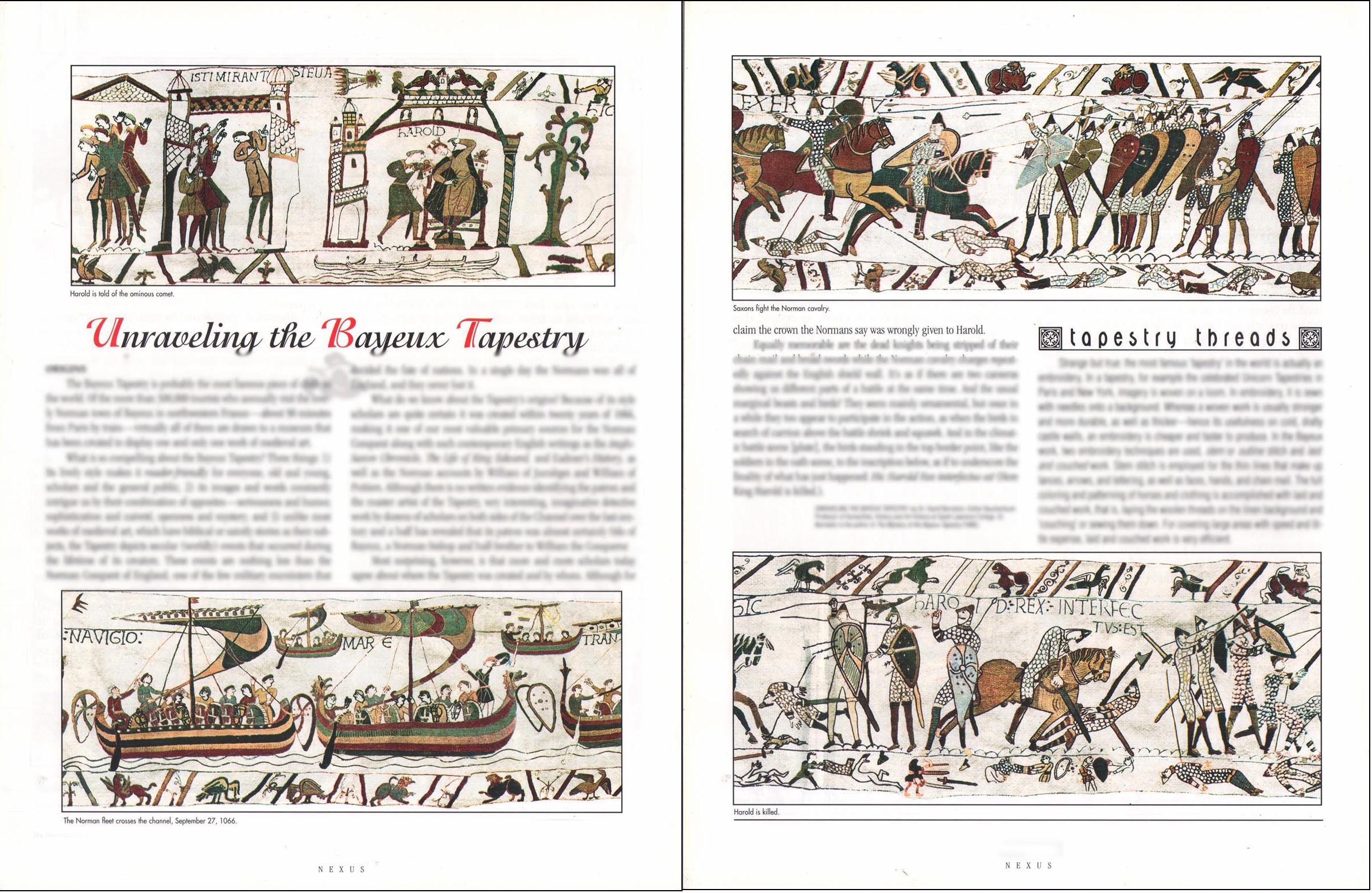
Macbeth Lesson on the Play’s Final Scene and Its Implications for Scotland’s Future: The Rise of Macbeth’s Rival, Malcolm, and His Queen, Saint Margaret – 1 Page
From this lesson students learn the enormous influence of Malcolm III’s Anglo-Saxon queen Saint Margaret of Scotland on the next two centuries of Scottish history. Malcolm’s and Margaret’s marriage was a side effect of the Battle of Hastings.
This lesson meets Common Core History Standards CCSS.ELA-LITERACY.RH.1, RH.2, RH.3, RH.6, RH.8 and RH.9 (for 9-10 and 11-12).
Macbeth Lessons and Lesson Plans Part III – Reading Visual Metaphors in Medieval Art
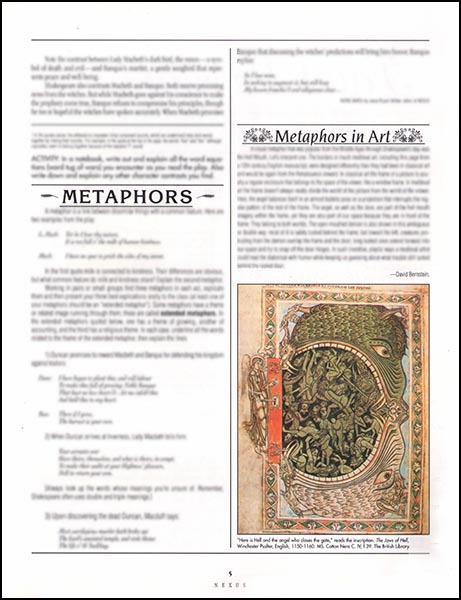
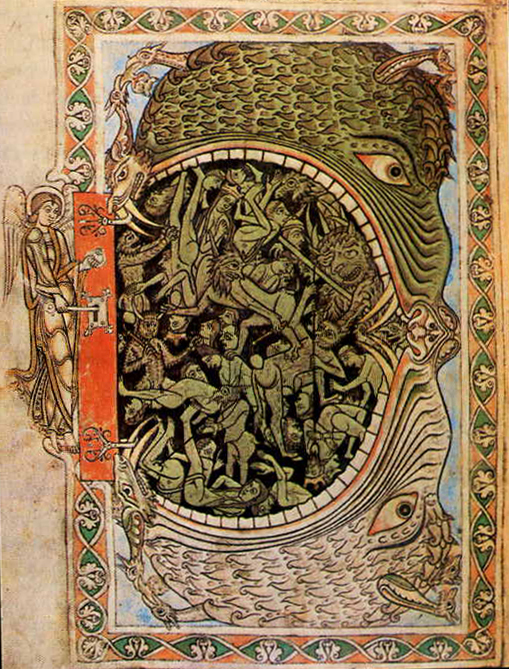
Macbeth Lesson on Visual Metaphors in Illuminated Manuscripts – 1 Page
In this lesson students identify and explicate visual metaphors and contrasts in two medieval images of Hell Mouths and relate them to the Porter Scene in Macbeth. Morality plays about the Mouth or Gate of Hell were very popular during Shakespeare’s youth; the Porter’s allusion to the Mouth of Hell in Macbeth would have resonated with a Shakespeare audience. This lesson meets Common Core Language Arts Standards CCSS.ELA-LITERACY.RL.1, RL.4 and RL.7 (for 9-10 and 11-12).
TEXT SAMPLE:
Sections include;
- METAPHORS
- METAPHORS IN ART – Metaphorical Medieval Hell Mouth images linked to the the Porter scene: “If a man were porter of hell gate, he should have old turning the key…”
“A visual metaphor that was popular from the Middle Ages through Shakespeare’s day was the Hell Mouth. Let’s interpret one. The borders in much medieval art, including this page from a 12th-century English manuscript, were designed differently than they had been in classical art and would be again from the Renaissance onward. In classical art the frame of a picture is usually a regular enclosure that belongs to the space of the viewer, like a window frame. In medieval art the frame doesn’t always neatly divide the world of the picture from the world of the viewer. Here, the angel balances itself in an almost balletic pose on a projection that interrupts the regular pattern of the rest of the frame. The angel, as well as the door, are part of the hell mouth imagery within the frame; yet they are also part of our space because they are in front of the frame. They belong to both worlds The open-mouthed demon is also shown in this ambiguous or double way: most of it is safely tucked behind the frame; but toward the left, creatures protruding from the demon overlap the frame and the door; long tusked ones extend forward into our space and try to snap off the door hinges…”
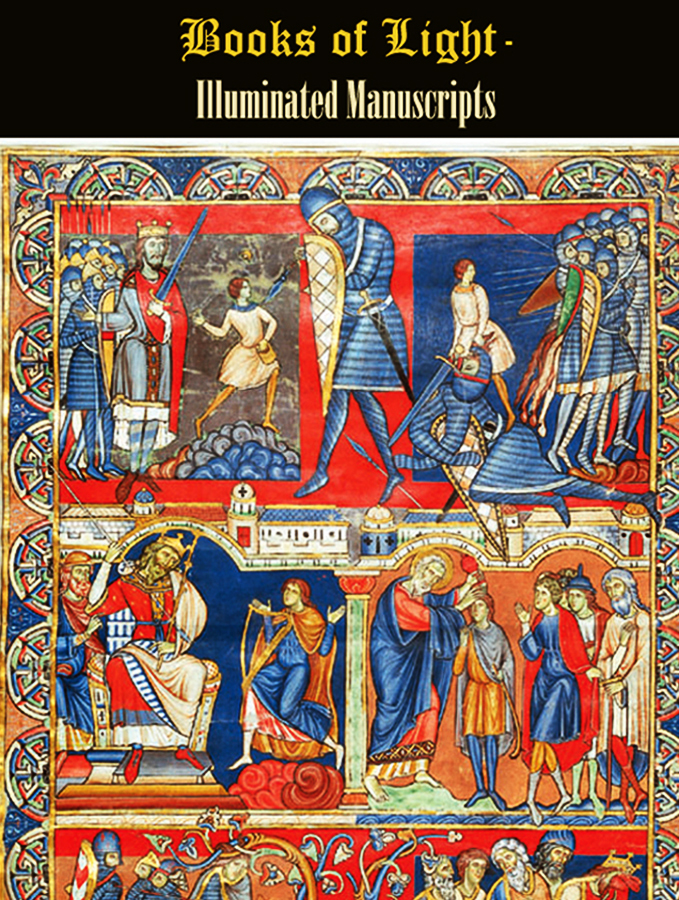
Macbeth Lesson on “Reading” Illuminated-Manuscript – 4 Pages
Students study the functions and styles of the medieval book or illuminated manuscript and learn to identify and trace image patterns in the illuminations of several manuscripts , including the 8th-century Lindisfarne Gospels (illuminated on one of Scotland’s “Holy Islands”) and a rose window. This chapter includes activities and meets Common Core Language Arts Standards CCSS.ELA-LITERACY.RL.7 and Common Core History Standards CCSS.ELA-LITERACY.RH.1, RH.2, and RH.8 (for 9-10 and 11-12) as well as National Core Arts Standards 7, 8, 9 and 11.
TEXT SAMPLE:
“In the Middle Ages, it seems everyone loved books, even if they couldn’t read. And most people couldn’t read. Even Vikings, who didn’t know how to read Latin – or, in most cases, any other language, stole and preserved gorgeous illuminated Bibles, after first killing their Christian owners. Irish missionaries lugged their massive illuminated manuscripts across Europe to help convert pagans, who were much impressed by them. Malcolm III (from the play) kissed his wife’s books regularly, even though he was illiterate. It was his way of showing affection. His wife, St. Margaret, was heart-broken when her favorite manuscript feel into a river (Margaret was literate). Why were books so highly esteemed? For one thing, illuminated manuscripts brightened the gray, medieval word of the Dark ages. the brilliant colors monk-artists used – ultra-marines, gleaming golds, violets, scarlets, sunny yellows and coppery greens – seemed to glow as if lit from within (thus the term ‘illuminated’). Also, books were rare, and anything rare is valued in any age. Before the invention of the printing press in the 15th-century, books were made by hand, one at a time. The word ‘manuscript’ means hand (manos is Latin for hand) written (script). A modern library owns tens of thousands of books; a medieval library was lucky to have a hundred. Another reason books were hard to come by is because manuscript paper or parchment is made from animal skin. Since early medieval books are often extremely large – up to 3 feet long and 2 1/2 feet wide – it required many skins to make the pages for one book. The 12-century Winchester Bible is made from the skins of 250 sheep!”
“Another reason books were so popular is because many believed they possessed power: intellectual, spiritual and even magical. Whoever owned books had access to this power…”
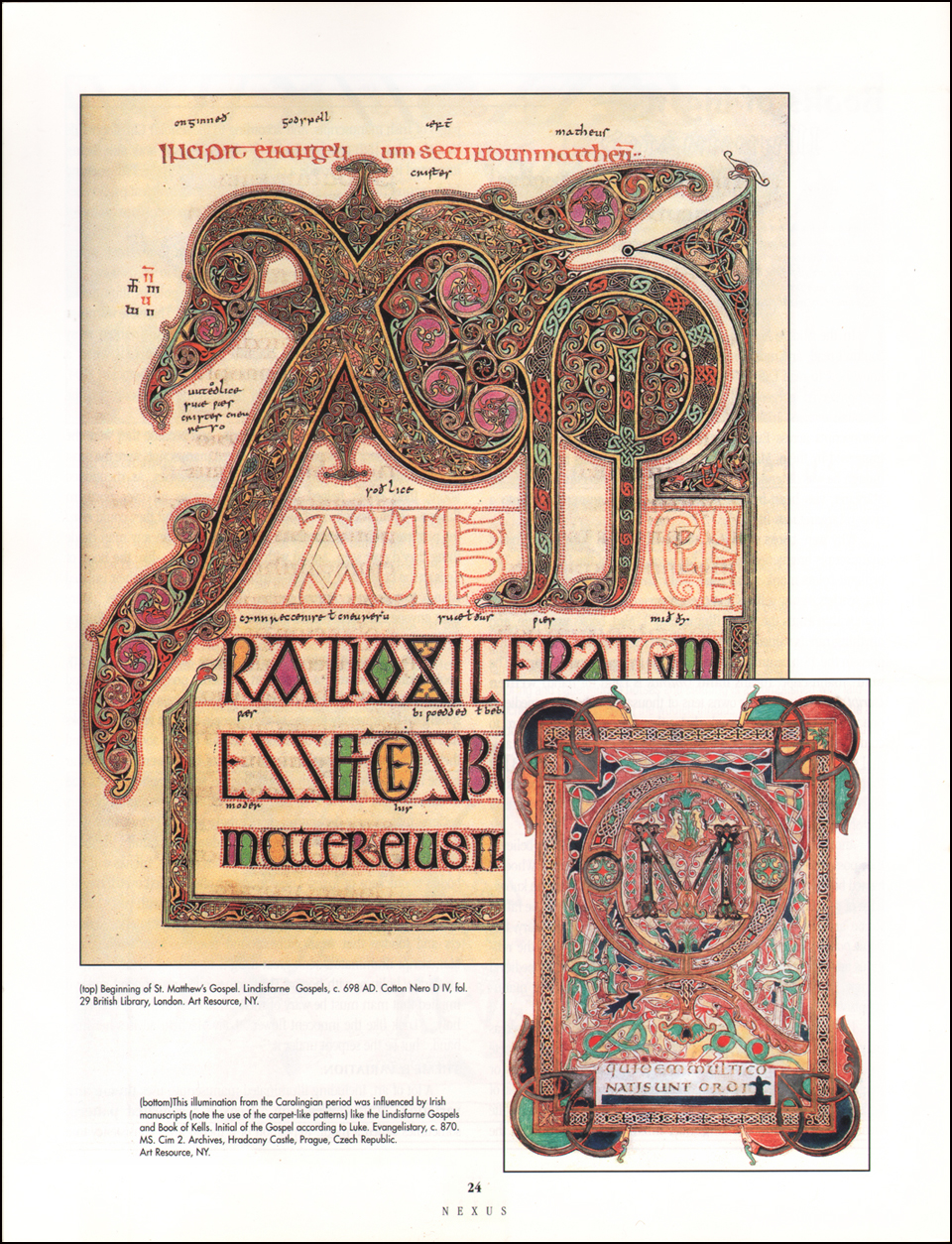
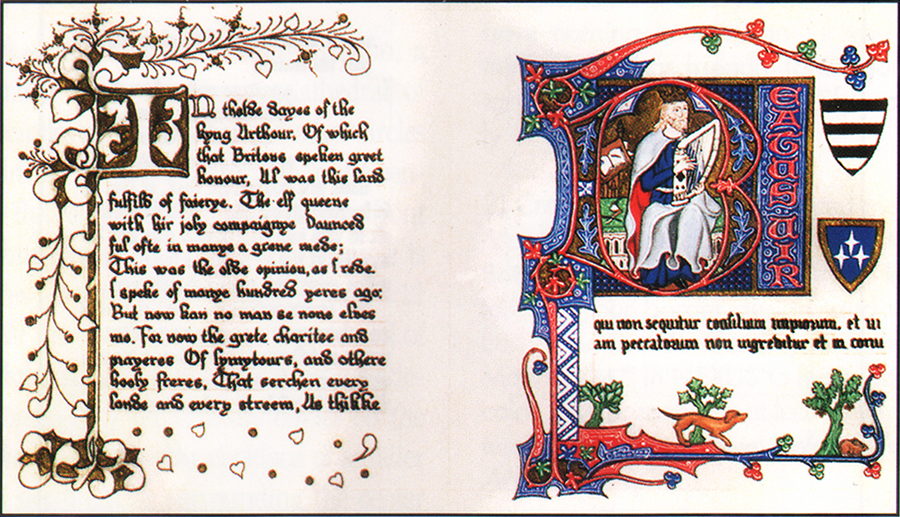
Manuscript-Making Lesson, the Monk’s Art – 2 Pages
In this lesson, a modern manuscript illuminator takes students through the stages of illumination enabling them to illuminate a scene from Macbeth, using techniques discussed in this section, as well as patterns, limited palette and visual metaphors that reflect metaphors or themes in the play. Lesson meets Common Core Language Arts Standards CCSS.ELA-LITERACY.RL.4 and RL.7 (for 9-10 and 11-12) as well as National Core Arts Standards 1 through 8.
TEXT SAMPLE;
The sections include:
- MAKING PARCHMENT
- COLLATING AND RULING PARCHMENT
- PENS, INK & WRITING
- DESIGNING THE DECORATION
- APPLYING GOLD LEAF
- PAINTING THE MANUSCRIPT
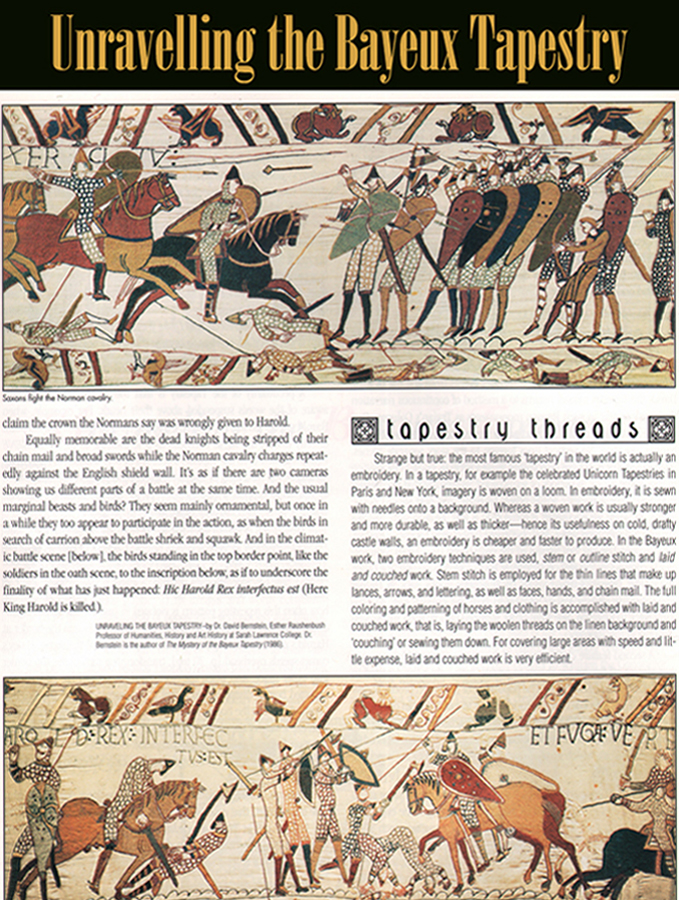
Macbeth Lesson – Unraveling the Bayeux Tapestry, Part II-Tapestry Threads – 1 Page
Students learn to read the pictorial language of the Bayeux Tapestry and the tapestry borders, which provide an alternative Saxon perspective that seems to contradict the Norman point of view emblazoned in the principle imagery. Students also explore techniques employed in creating this celebrated visual history of the Battle of Hastings.
TEXT SAMPLE:
“The Bayeux Tapestry is probably the most famous piece of cloth in the world. Of the more than 300,000 tourists who annually visit the lovely Norman town of Bayeux in northwestern France – about 90 minutes from Paris by train – virtually all of them are drawn to a museum that has been created to display one and only one work of medieval art. What is so compelling about the Bayeux Tapestry? Three things: 1) Its lively style makes it reader-friendly for everyone, old and young, scholars and the general public; 2) its images and words constantly intrigue us by their combination of opposites – seriousness and humor, sophistication and naiveté, openness and mystery; and 3) unlike most works of medieval art, which have biblical or saintly stories as their subjects, the Tapestry depicts secular (worldly) events that occurred during the lifetime of its creators. These events are nothing less than the Norman Conquest of England, one of the few military encounters that decided the fate of nations. In a single day the Normans won all of England, and they never lost it…”
– by Dr. David Bernstein, Esther Raushenbush Professor of Humanities, History and Art History, Sarah Lawrence College, and author of The Mystery of the Bayeux Tapestry (1986)
This lesson meets Common Core Language Arts Standard CCSS.ELA-LITERACY.RL.7 (for 9-10 and 11-12) as well as National Core Arts Standards 7, 8, 9 and 11.
Macbeth Lessons and Lesson Plans Part IV – Medieval Music and Science
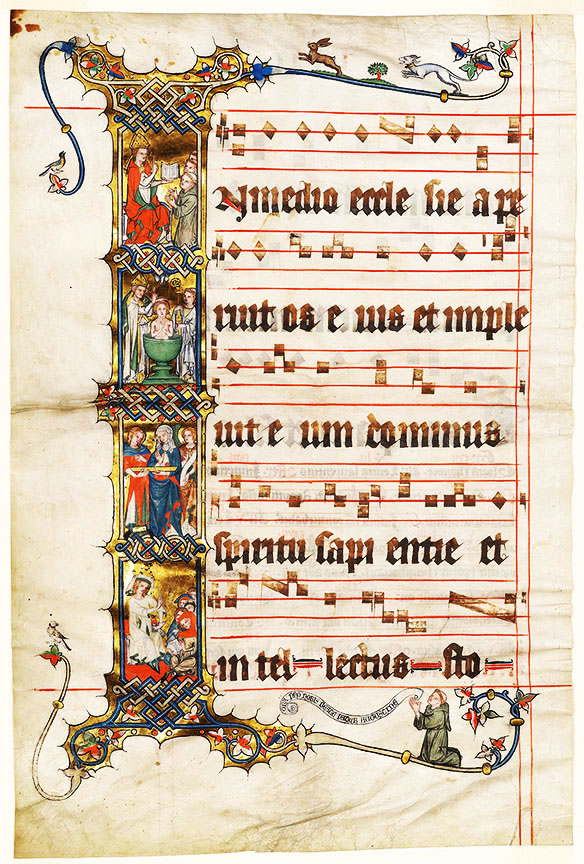
Macbeth Music Lesson – An 11th-Century Musical Revolutionary – 2 Pages
In this lesson students explore the work of Guido of Arezzo whose book on medieval music theory, Micrologus, laid the foundation for Western musical notation. The lesson also emphasizes the importance of recognizing musical patterns in sight singing.
This lesson meets Common Core Anchor Reading Standards CCSS.ELA-LITERACY.CCRA.R.1 and R.7 and Common Core History Standards CCSS.ELA-LITERACY.RH.1, RH.2, and RH.7 (for 9-10 and 11-12) as well as Music Standards 7 and 11.
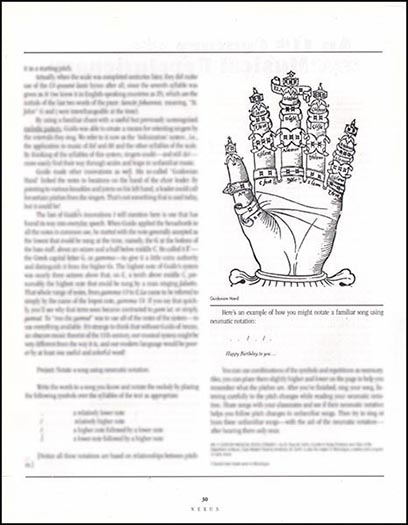
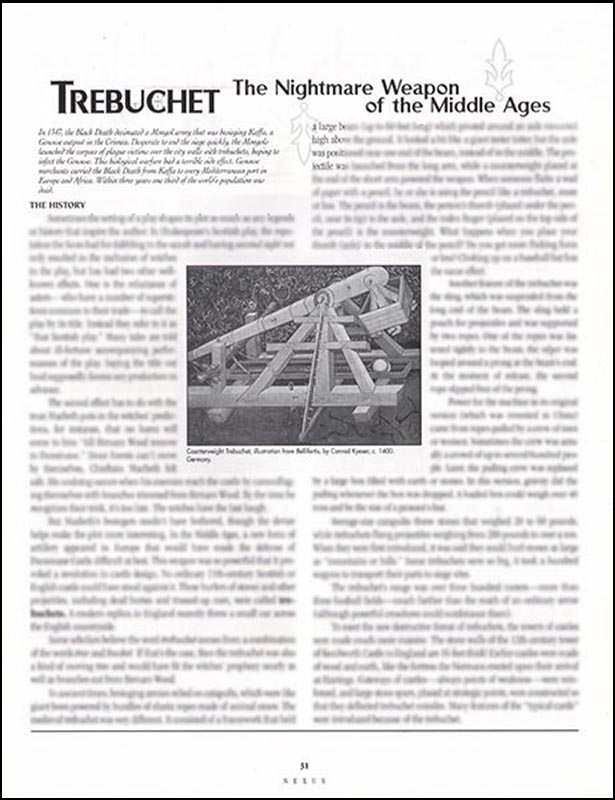
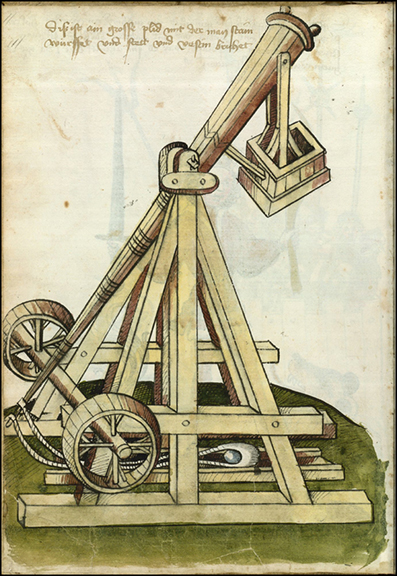
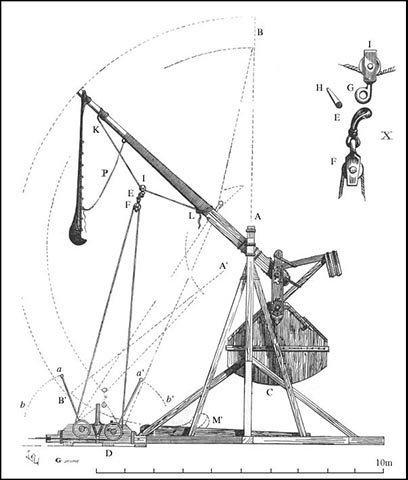
Macbeth Physics Lesson – The Trebuchet — Nightmare Weapon of the Middle Ages – 2 Pages
In this lesson students investigate the history and laws of physics associated with the most powerful weapon of the Middle Ages: the concepts of potential energy and work, and the physics of levers, hinges and rotational motion are examined.
TEXT SAMPLE:
THE HISTORY –
“In the Middle Ages, a new form of artillery appeared in Europe that would have made the defense of Dunsinane Castle difficult at best. This weapon was so powerful that it provoked a revolution in castle design. No ordinary 11th-century Scottish or English castle could have stood against it. These hurlers of stones and other projectiles, including dead horses and trussed-up men, were called trebuchets. A modern replica in England recently threw a small car across the English countryside. Some scholars believe the word trebuchet comes from a combination of the words tree and bucket. If that’s the case, then the trebuchet was also a kind of moving tree and would have fit the witches’ prophecy nearly as well as branches cut from Birnam Wood…”
THE PHYSICS –
“For centuries investigators have known of a medieval mathematician and pioneering physicist named Jordanus of Nemore. Research done at Purdue University by Professors Werner Soedel, Les Eigenbrod,, and the author indicates that Jordanus observed trebuchets closely and developed some of his physics insights as a result…One of Jordanus’ most important ideas is ‘positional gravity,’ the notion that a body can do more work if it falls in a straight line than if it descends in a curve or at an angle. If we think of such ideas today in a physics class, it is probably in connection with ramps or inclined planes. We all know that it’s easier to move a weight up a ramp than to pick it straight up. You can easily do experiments with a spring scale and a ramp to show this. TRY TO FIGURE OUT A MATHEMATICAL LAW THAT RELATES THE WEIGHT YOU ARE TRYING TO RAISE AND THE ANGLE OF THE RAMP. The first step is to observe how changing the ramp angle affects the amount of effort you need to apply.”
“Jordanus, of course, looked at this phenomena from the opposite direction: the amount of work yielded by objects falling straight down, at an an angle, or in a curve. In a trebuchet, the descent of the weight does the work and determines how far the missile will fly. When a fixed-weight trebuchet is released, its weight swings in an arc along with the short end of the lever to which it’s attached. But if the weight hangs from a hinge, it falls essentially straight down during the first part of its descent (as far as the motion of it s center of gravity is concerned…”
– by Vernard Foley, Associate Professor specializing in the History of Technology and Science, Purdue University and frequent contributor to Scientific American
This chapter is aligned with the following Common Core Science Standards: CCSS.ELA-LITERACY.RST.1, RST.2, RST.3 RST.5, and RST.7 (for 9-10- and 11-12) and includes activities.
Macbeth Lesson Plans, Teaching Guidelines, and Supplements
NEXUS Supplements can be accessed under the SUPPLEMENTS menu. NOTE: NEXUS supplements and books are protected by U.S. Copyright and cannot be photocopied, photographed or downloaded.
MACBETH FREE and FEE LESSONS can be accessed under the LESSONS menu.
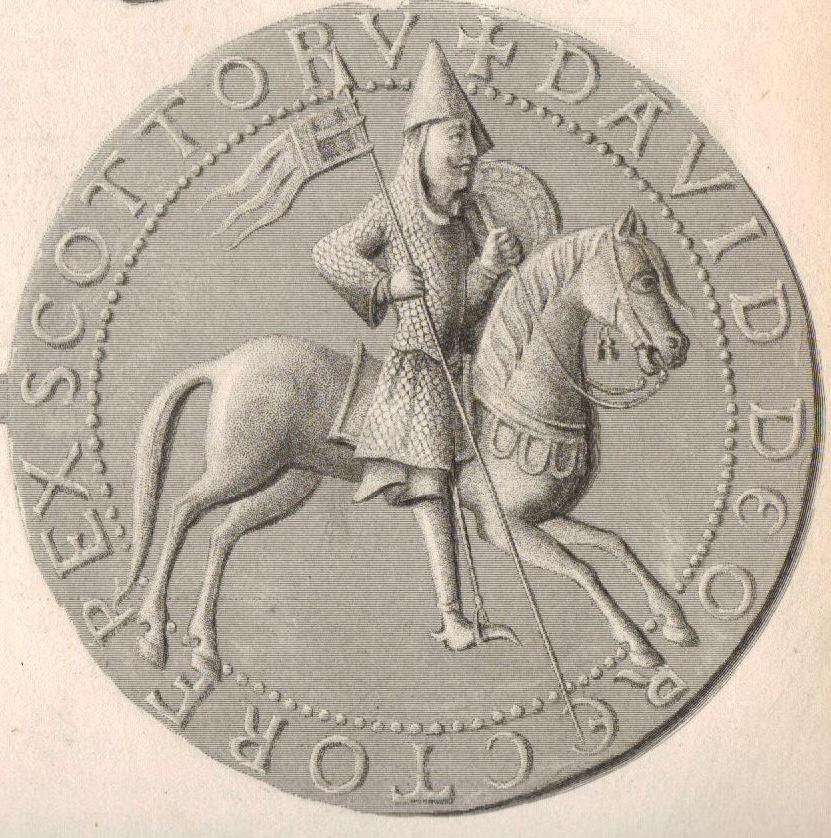
Macbeth Supplementary Lesson 1: Saint Margaret of Scotland & Her Royal Sons: Edgar, Alexander & David
From this lesson students learn more about the highly influential Scottish queen, Saint Margaret, who Malcolm Canmore met, protected (after she fled from the Norman Invasion of England in 1066) and married. Students also explore how Saint Margaret’s sons ruled Scotland after the fall of Macbeth. This supplementary lesson is aligned with Common Core History Standards CCSS.ELA-LITERACY.RH.1 and RH.2.
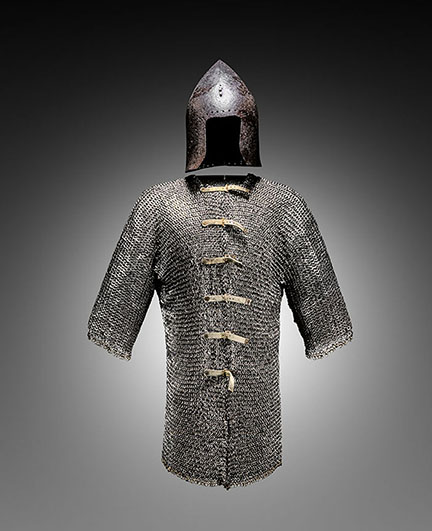
Macbeth Supplementary Lesson 2: Medieval Armor & the Age of Knights Lesson
In the Medieval Armor Supplementary lesson students examine the type of armor Macbeth and MacDuff would have worn, and they learn about the evolution of armor through the centuries.
This lesson is aligned with Common Core History Standards CCSS.ELA-LITERACY.RH.1, RH.2 and RH.4 (for 9-10 and 11-12).

Macbeth Supplementary Lesson 3: Romanesque Architecture Lesson
This lesson introduces students to the Romanesque style, which spread from France to most of Western Europe during the Macbeth era. However, like other Continental influences, Romanesque Architecture reached Scotland late. The supplement focuses on the Fortress Cathedral of Durham, which was begun in northern England the year Malcolm III and Saint Margaret died, 1093, and helped defend the border between Scotland and England.
This supplementary lesson is aligned with Common Core History Standards CCSS.ELA-LITERACY.RH.1, RH.2, RH.4 and RH.8 (for 9-10 and 11-12)
Macbeth Supplementary Lesson 4: Braveheart and Robert the Bruce: Scotland’s Heroes
The Braveheart and Bruce supplementary lesson explores the unification of Scotland & England, which is alluded to in Macbeth. The unification of the two kingdoms began, of course, with James I, two or three years before Shakespeare wrote his tragedy.
This lesson is aligned with Common Core History Standards CCSS.ELA-LITERACY.RH.1, RH.2, RH.3, RH.6, RH.8 and RH.9. (for 9-10 and 11-12).
Te provide free interdisciplinary Macbeth lesson plans with interdisciplinary activities for all subjects with class-set orders of Macbeth and the Dark Ages.
Macbeth vocabulary exercises and quizzes, plot quizzes and the Macbeth Test will soon be available.
GUIDELINES: The outstanding and thorough Macbeth Guidelines provide additional lesson ideas for using the NEXUS book, suggestions for reports, research and cross curricular projects, including dramatic stagings of scenes from Macbeth and other Shakespeare plays. They also include multiple suggestions for ancillary readings in primary sources that offer different perspectives on the same topic and teach students to recognize biases in divergent accounts. Thus they enable teachers to rigorously meet three Common Core Anchor Standards:
NEXUS is a 501(c)(3) nonprofit based in Cleveland, OH. Our mission is to provide schools with outstanding interdisciplinary resources that inspire students to THINK, LINK and IMAGINE
A portion of our proceeds is donated annually to UNICEF'S Audrey Hepburn All Children in School Fund.


